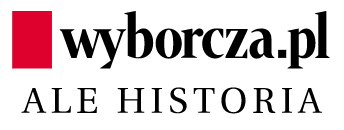 Brama w obozie koncentracyjnym w Dachau z napisem ‘Arbeit macht frei’ (praca czyni wolnym) (fot. Diego Delso, CC BY-SA 4.0 , via Wikimedia Commons)
Brama w obozie koncentracyjnym w Dachau z napisem ‘Arbeit macht frei’ (praca czyni wolnym) (fot. Diego Delso, CC BY-SA 4.0 , via Wikimedia Commons)
 Dlaczego na pomniku w obozie koncentracyjnym brakowało trzech trójkątów?
Dlaczego na pomniku w obozie koncentracyjnym brakowało trzech trójkątów?
Anna Machcewicz
Dlaczego na pomniku w obozie koncentracyjnym brakowało trzech trójkątów?
.
Zwiedzenie kolejnego muzeum – utworzonego na miejscu byłego obozu koncentracyjnego – mimo powtarzalności elementów wystawy, stałości w funkcjonowaniu obozowej machiny nie zmniejsza ciężaru w sercu. Każdy zwiedzający musi się mierzyć po raz kolejny z pytaniem, jak to było możliwe? Z drugiej strony ta powtarzana i pozornie znana historia za każdym razem dostarcza coraz bardziej szczegółowej wiedzy, bo przecież każdy obóz miał swoją specyfikę. Taka była moja wyprawa do Dachau.
Obóz koncentracyjny Dachau
Ten obóz dla politycznych przeciwników nazistów powstał na terenie nieczynnej fabryki prochu i amunicji 22 marca 1933 r., wkrótce po nominacji Hitlera na kanclerza Rzeszy. Istniał 12 lat i stale się powiększał. Na jego obszarze i w licznych filiach więziono ponad 200 tys. ludzi z całej Europy. Około jednej piątej straciło życie, zanim został wyzwolony 29 kwietnia 1945 r. przez żołnierzy amerykańskich.
Był obozem wzorcowym, „szkołą przemocy” najpierw dla własnej załogi składającej się z esesmanów. Pierwszy komendant Theodor Eicke ogłosił w październiku 1933 r. regulamin zawierający brutalne sankcje karne dla więźniów oraz przepisy służbowe dla wartowników SS (Schutzstaffel). Regulamin instytucjonalizował władzę SS nad więźniami, sankcjonował samowolę i terror.
 Zdjęcie propagandowe: strażnicy SS i więźniowie w obozie koncentracyjnym Dachau, czerwiec 1938 r.
Zdjęcie propagandowe: strażnicy SS i więźniowie w obozie koncentracyjnym Dachau, czerwiec 1938 r.
Wypracowano tu schematy poniżania więźniów, odzierania ich z godności, bezdusznego korzystania z ich sił witalnych, aż do ostatecznych możliwości. Eicke objął funkcję szefa Inspektoratu Obozów Koncentracyjnych i wprowadził obowiązujący w Dachau model w pozostałych obozach.
Pomnik w Muzeum KL-Dachau
Liczące 43 tys. Dachau niedaleko Monachium jest znane światu jako miejsce zbrodni narodowego socjalizmu. Wcale nie chciało podtrzymywać tej pamięci, skoro aż do lat 60. teren byłego obozu zamieszkiwali Niemcy wygnani z terenów Polski i Czech. Dopiero w 1965 r. na żądanie byłych więźniów powstało tu Muzeum KL-Dachau.
We wrześniu 1968 r. na terenie obozu uroczyście odsłonięto pomnik Narodów autorstwa jugosłowiańskiego rzeźbiarza Nandora Glida. Naprzeciwko rzeźby z brązu, która symbolizuje postać człowieka w ogrodzeniu z drutu kolczastego, znajduje się relief w kształcie łańcucha, oznaczający w przenośni solidarność więźniów w obozie. Na reliefie umieszczono trójkąty w rozmaitych kolorach, którymi SS stygmatyzowało poszczególne kategorie więźniów.
 We wrześniu 1968 r. na terenie obozu Dachau uroczyście odsłonięto pomnik Narodów autorstwa jugosłowiańskiego rzeźbiarza Nandora Glida
We wrześniu 1968 r. na terenie obozu Dachau uroczyście odsłonięto pomnik Narodów autorstwa jugosłowiańskiego rzeźbiarza Nandora Glida
Pierwotne założenie rzeźbiarza, to, które wygrało konkurs w 1959 r., zostało w pomniku okaleczone. Wśród trójkątów brak różowego, zielonego i czarnego, którymi oznaczani byli homoseksualiści, kryminaliści i tzw. więźniowie aspołeczni. W pamięci byłych więźniów politycznych, w dominującej narracji nie mieli statusu ofiar.
Trójkąty, które wróciły
Narracja, dominująca jeszcze do lat 80., ulegała stopniowej zmianie. Na oglądanej dziś wystawie wszystkie kategorie więźniów odzyskały równorzędny głos. Stąd wiem np., że robotnik Anton H. był niedużego wzrostu i upośledzony fizycznie. Już przed 1933 r. często był karany za żebractwo. We wrześniu 1933 r. podczas wielkiej operacji policyjnej przeciwko żebrakom został aresztowany i skazany na dwa lata pobytu w domu pracy poprawczej. Stąd, z racji przepełnienia, został w maju 1934 r. wraz z innymi zatrzymanymi wysłany do Dachau, gdzie otrzymał kategorię więźnia „aspołecznego” i został oznaczony czarnym trójkątem.
 Materiały szkoleniowe dla strażników SS – identyfikacja więźniów
Materiały szkoleniowe dla strażników SS – identyfikacja więźniów
W 1936 r. nadal był w obozie, choć czas kary już się skończył. Zresztą w tym roku znów była obława i mógł paść jej ofiarą. Dalszy los Antona H. nie jest znany. Pozostało zdjęcie z policyjnej kartoteki i spisana na jej podstawie krótka notka o jego życiu.
Podczas rządów nazistów tacy jak on zostali bezterminowo wykluczeni ze społeczeństwa, skazani na straszny los w obozie, a po wojnie przez lata usuwani ze zbiorowej pamięci.
Trudno się z nimi było utożsamiać. Nie byli więźniami politycznymi, bojownikami ruchu oporu, duchownymi (których szczególnie wielu, zwłaszcza z Polski, trafiło do Dachau) ani Żydami. A więc nie mogli być traktowani ani jako bohaterowie, ani jako ofiary prześladowań, które zostały uznane za najstraszniejsze i najważniejsze w pejzażu zbrodni III Rzeszy. A przecież życie Antona H. było nie mniej warte niż którejkolwiek innej ofiary Dachau czy innego obozu.
Zawartość publikowanych artykułów i materiałów nie reprezentuje poglądów ani opinii Reunion’68,
ani też webmastera Blogu Reunion’68, chyba ze jest to wyraźnie zaznaczone.
Twoje uwagi, linki, własne artykuły lub wiadomości prześlij na adres:
webmaster@reunion68.com




